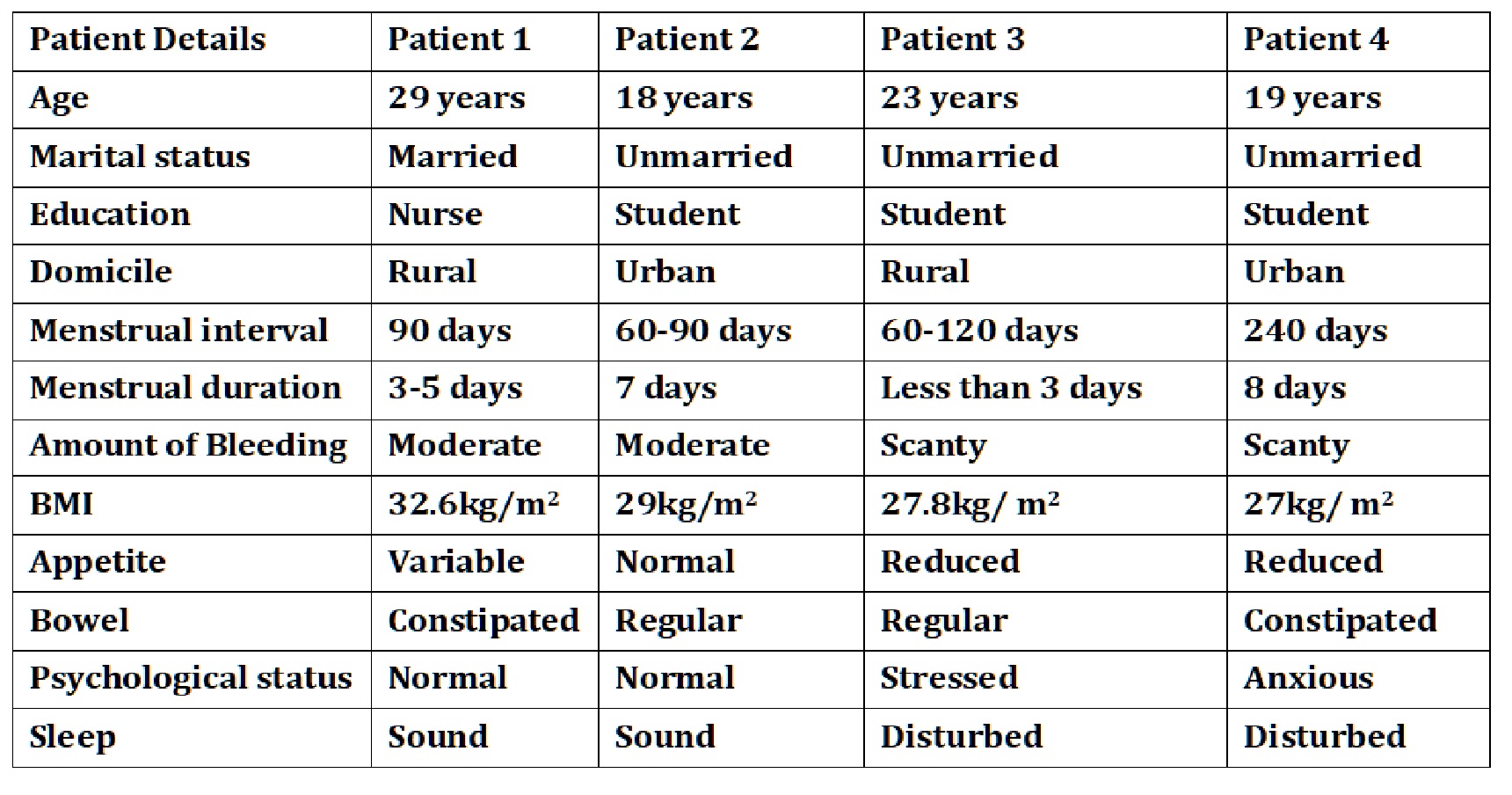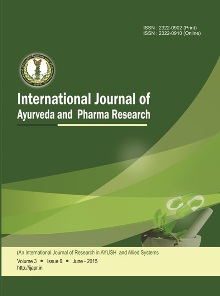Effect of Lasunerandadi Kashaya in Oligomenorrhea Associated with Polycystic Ovarian Syndrome
Abstract
Polycystic ovarian syndrome (PCOS) is a heterogeneous, multisystem endocrinopathy in women of reproductive age that is characterized by chronic anovulation, resulting in infertility, irregular bleeding, obesity, and hirsutism. The prevalence of PCOS in reproductive-age women was mentioned as 20% to 30%, with 90% of affected women presenting with oligomenorrhea, 30% with amenorrhea, and 50% being obese. In Ayurveda, there is no direct correlation with Polycystic ovarian syndrome. Kapha vata avarana causing Artavanasha, which is explained as Nashtartava by Susrutha, can be considered in this particular disease. This case series contains 4 cases of oligomenorrhea associated with PCOS with BMI > 25 Kg/m2 attended the OPD of Prasuti evam Striroga, Government Ayurveda College, Thiruvananthapuram. Effect of Lasunerandadi Kashaya was analysed and was found effective in oligomenorrhea associated with PCOS.
Downloads

Copyright (c) 2025 International Journal of Ayurveda and Pharma Research

This work is licensed under a Creative Commons Attribution-NonCommercial-ShareAlike 4.0 International License.






